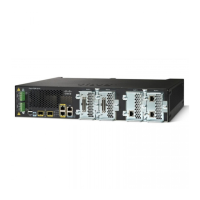1-11
Catalyst 3550 Multilayer Switch Software Configuration Guide
78-11194-09
Chapter 1 Overview
Network Configuration Examples
• High-performance workgroup—For high-speed access to network resources, you can use
Catalyst 3550 switches in the access layer to provide Gigabit Ethernet to the desktop. To prevent
congestion, use QoS DSCP marking priorities on these switches. For high-speed IP forwarding at
the distribution layer, connect the Catalyst 3550 switches in the access layer to a Gigabit multilayer
switch (such as the Catalyst 3550 multilayer switch) in the backbone.
Each switch in this configuration provides users with a dedicated 1-Gbps connection to network
resources in the backbone. Compare this with the switches in a GigaStack configuration, where the
1-Gbps connection is shared among the switches in the stack. Using these Gigabit GBIC modules
also provides flexibility in media and distance options:
–
1000BASE-T GBIC: copper connections of up to 328 feet (100 m)
–
1000BASE-SX GBIC: fiber-optic connections of up to 1804 feet (550 m)
–
1000BASE-LX/LH GBIC: fiber-optic connections of up to 32,808 feet (6 miles or 10 km)
–
1000BASE-ZX GBIC: fiber-optic connections of up to 328,084 feet (62 miles or 100 km)
• Redundant Gigabit backbone—Using HSRP, you can create backup paths between two
Catalyst 3550 multilayer switches to enhance network reliability and load balancing for different
VLANs and subnets. Using HSRP also provides faster network convergence if any network failure
occurs. You can connect the Catalyst switches, again in a star configuration, to two Catalyst 3550
multilayer backbone switches. If one of the backbone switches fails, the second backbone switch
preserves connectivity between the switches and network resources.

